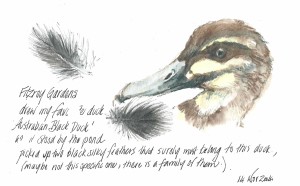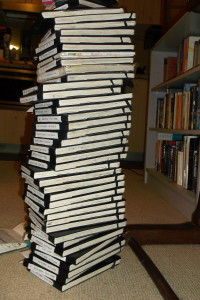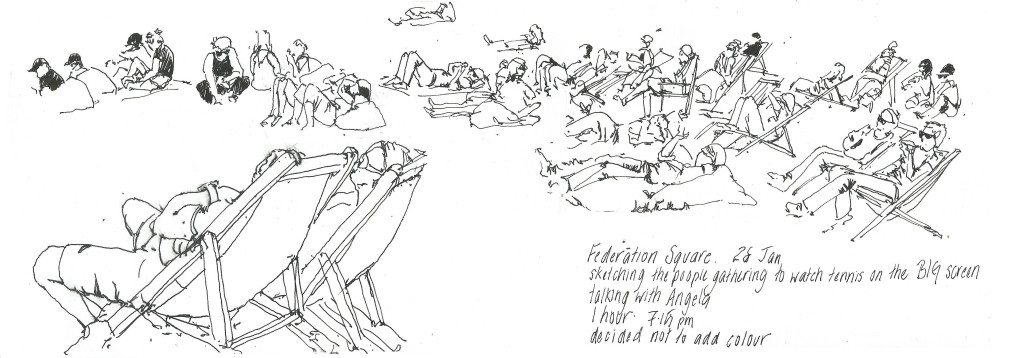
I have thought about this a few times over the last few years in relation to my sketches/drawings and this seems a good opportunity to put my thoughts in order and onto ‘paper’ , so to speak.
My answer to the query was"
“I describe my sketchbooks as sketchbook journals. It is a record of my observances at a particular time and place. It is a record of my life, I have just started my 50th sketchbook journal since Dec 2008. But when it comes down to it I just LOVE TO DRAW, but I like to give it context.”
I have drawn all my life, but only regularly since 2005 (ish), in any sketchbook I could get. I was then using watercolour pencils and ink pens and graphite pencils. I have continued to use these materials, exploring and building on my knowledge of how they work and the effects that can be achieved. Every now and then I splash out and experiment on a large sheet with charcoal or go to a life drawing class, but in general this is my thing!
In December 2008 I bought my first Moleskine Watercolour Sketchbook (13 x 19 cm). This was a watershed moment in my drawing path. There have been many discussions on facebook groups about the format of a sketchbook (landscape/portrait) and what is ‘best’ and the effect on a sketch. I love to use this format and fit my sketches to the format.
I carry my sketchbooks, watercolour pencils ink pen with me everyday, everywhere. Read about what and how I use my drawing material here There is always the opportunity to draw! I also draw longer studies of objects at home in the same sketchbooks.
The most important part of the page is the drawing but I also like to provide a short narrative. These are my journals of my life. I can look back to a date and see what I was doing (or drawing) at the time. I have captured everyday matters, travel and serious illness.
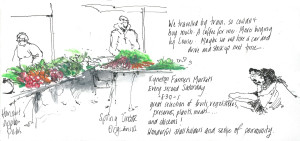
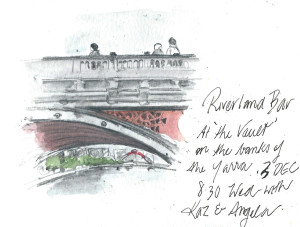
The words are not the focus of the page but provide a context and narrative.
There is an excellent book called Globejotting : how to write extraordinary travel journals (and still have a good time on your trip ) by Dave Fox which provides some ideas about what to write about. But I do not want the words to overtake the page. Although sometimes feel like I have so much to say , that I could write for pages.
- One of my friends thinks I write too much and prefers my pages with few words.
- Another tells me that they can hear my voice in the words on the page and that makes it even more personal and special and enjoys when I write a lot!
- People who do not know me and browse through my sketchbooks often comment on the fact that I write notes and are fascinated by the idea.
- But in the end I ask myself “who are the journals for” – they are for me !
- Colour smudges onto opposite page
- some drawings I am so pleased with that I don't want to "ruin them"
- If I have a particularly special drawing, or heavily coloured drawing that would smudge I put a piece of Baking paper between the pages to protect them.
- I have started drawing subject that I know I have become good at and want to start drawing on separate sheet – feathers, nests and now books. I want to draw them a bit larger than my 13 x 19 journal size and also potentially have them framed for an exhibition, sell prints and cards. One day soon..
